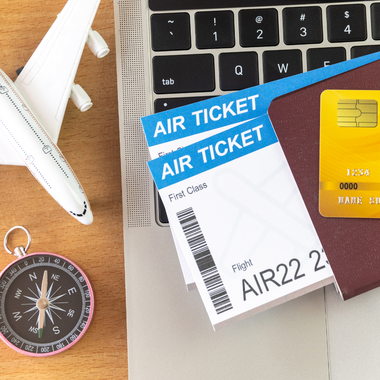
- Three minutes read
The smart tools helping travel merchants and acquirers work better together
The way travel merchants work with acquirers is harming liquidity. Here’s how smart tools can improve this and help merchants thrive.
For the first time in a while, the clouds appear to be lifting for the travel industry, with growth forecast to continue over the next decade. But clear skies remain elusive, with serious cash flow challenges hindering agents, airlines, tour operators and more.
This may be no surprise after many years of serious disruption. But one of the key drivers behind the struggle to maintain liquidity, according to our Travelling Light whitepaper, is the way merchants work with card acquirers. These are the businesses which accept credit card payments on their behalf.
Thankfully, this is a challenge that can be overcome with the right tools. Here’s why the terms of this relationship can prove so damaging, and how merchants can tackle this to improve cash flow and look ahead with optimism.
How do travel merchants and acquirers work together?
If a customer makes a card payment, acquirers can demand collateral from travel merchants if terms exceed appetite or the risk profile demands mitigation.
The reason they do this is because acquirers are liable to refund customers via chargeback if service isn’t delivered. To protect themselves if a merchant goes bust, acquirers sometimes retain 100 percent of funds from a transaction until the moment travel gets underway.
This makes sense for the acquirer – they’re not seeking to harm merchants, and they do need protection. Unfortunately for travel merchants, funds are often withheld for months and cash flow can take a serious hit.
So why is this system in place?
Acquirers lack data insights
Acquirers often lack full visibility of their exposure to merchants, instead calculating the collateral they require using industry average times between payment and when travel begins.
This leads to conservative assumptions that don’t account for lengthy periods during the year when consumers have booked holidays but not yet taken them. As a result, acquirers could be holding onto too much of merchants’ funds, for far too long.
But there are tools available to deliver the insight to address this issue, and protect acquirers against potential chargebacks without tying up travel merchants’ funds for so long.
How smart risk assessment tools can help travel merchants and acquirers
With smart risk assessment tools, acquirers can accurately calculate their exposure to each travel merchant, providing them precise figures instead of estimates. With these accurate figures, acquirers can afford to take a less conservative approach and only demand the funds they need, and no more.
Smart risk assessment tools provide acquirers with greater business intelligence, using different layers of data to deliver this insight.
-
Payment transaction data: basic information about the value of the transaction.
-
Booking data: airline, departure dates and whether the trip is multi-leg.
-
Ticketing data: capturing changes to the date of travel or a redemption for a credit note.
-
Card scheme rules: setting the time limit for when cardholders can raise a chargeback. After that time limit lapses, there is no risk exposure.
By reconciling all this live information and visualising it on a dashboard, acquirers can gain a clear, real-time picture of its exposure to a travel company, and how it may change in the future. This is good news for travel merchants, who can enjoy fairer, more predictable holdback arrangements as a result of greater transparency.
Addressing cash flow in travel
The use of smart risk assessment tools can be a boon for travel merchants, with even greater benefits available if an acquirer grants them access to their own data via this platform.
This can give travel merchants a greater understanding of an acquirer’s risk exposure, and the likely adjustments the acquirer sets for the reserve. This can help merchants better plan their budgets.
With the travel industry on the up, it’s vital for acquirers and travel merchants to achieve a smoother working relationship to help alleviate cash flow challenges. With smart tools, they can do just this, and flourish in the bright future of the travel industry.
To learn more about how smart data can cut travel companies’ funds held by card acquirers, check out our Travelling Light whitepaper




